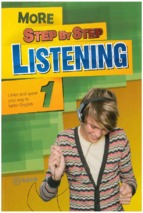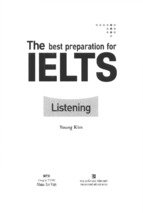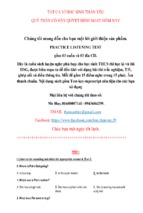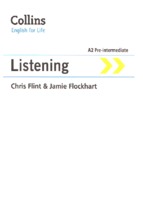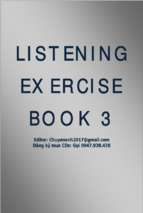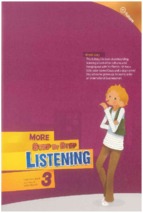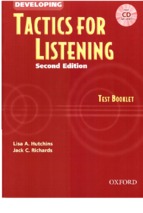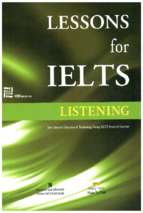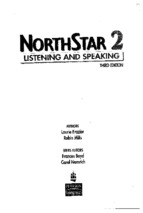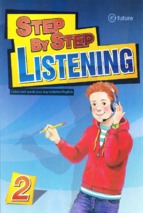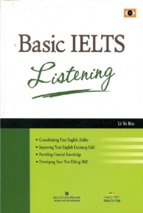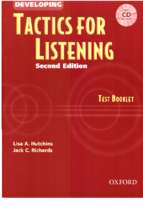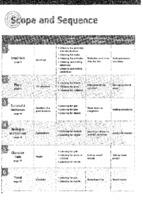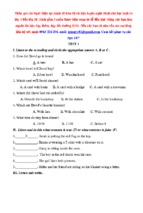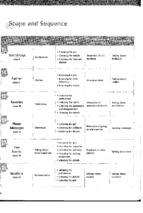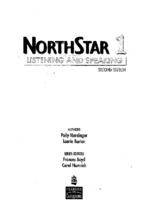Ten_best_teaching_practices_how_brain_research_and_learning_styles_define_teaching_competencies
To my sons, Christopher Scott McBrayer and Kevin Lane McBrayer, and
in memory of their brother, Chad Michael McBrayer
Copyright 2011 by Corwin
All rights reserved. When forms and sample documents are included, their use is
authorized only by educators, local school sites, and/or noncommercial or nonprofit
entities that have purchased the book. Except for that usage, no part of this book may be
reproduced or utilized in any form or by any means, electronic or mechanical, including
photocopying, recording, or by any information storage and retrieval system, without
permission in writing from the publisher.
For information:
Corwin
A SAGE Company
2455 Teller Road
Thousand Oaks, California 91320
(800) 233-9936
Fax: (800) 417-2466
www.corwin.com
SAGE Pvt. Ltd.
B 1/I 1 Mohan Cooperative
Industrial Area
Mathura Road, New Delhi 110 044
India
SAGE Ltd.
1 Oliver’s Yard
55 City Road
London EC1Y 1SP
United Kingdom
SAGE Asia-Pacific Pte. Ltd.
33 Pekin Street #02-01
Far East Square
Singapore 048763
Printed in the United States of America
Library of Congress Cataloging-in-Publication Data
Tileston, Donna Walker.
Ten best teaching practices : how brain research and learning styles define teaching
competencies / Donna Walker Tileston. — 3rd ed.
p. cm.
Includes bibliographical references and index.
ISBN 978-1-4129-7393-9 (pbk.)
1. Effective teaching—United States. 2. Learning. 3. Educational
innovations—United States. 4. Educational change—United States. I. Title.
LB1775.2.T54 2011
371.102—dc22
2010042325
This book is printed on acid-free paper.
10
11
12
13
14
Acquisitions Editor:
Associate Editor:
Editorial Assistant:
Production Editor:
Copy Editor:
Typesetter:
Proofreader:
Indexer:
Cover Designer:
Permissions Editor:
10
9
8
7
6
5
4
Carol Collins
Megan Bedell
Sarah Bartlett
Veronica Stapleton
Mark Bast
C&M Digitals (P) Ltd.
Susan Schon
Holly Day
Rose Storey
Adele Hutchinson
3
2
1
Contents
Preface
About the Author
ix
xiii
1. Creating an Environment That Facilitates Learning
The Need for Autonomy in the Classroom
Students’ States of Mind: Making Learning Positive
Building a Brain-Friendly Environment
Measuring Success
Conclusion
1
2
3
13
18
19
2. Differentiating for Different Learning Styles
Auditory Learners
Visual Learners
Kinesthetic Learners
Measuring Success
Conclusion
21
24
26
32
33
34
3. Helping Students Make Connections From Prior Knowledge
Tapping Into Prior Knowledge
Building Prior Knowledge in the Classroom
Measuring Success
Conclusion
35
37
39
48
48
4. Teaching for Long-Term Memory
Semantic Memory
Episodic Memory
Sensory Memory
Reflective Memory
Measuring Success
Conclusion
49
51
54
55
56
56
56
5. Constructing Knowledge Through
Higher-Level Thinking Processes
Classification
Induction
Deduction
59
63
64
64
Error Analysis
Constructing Support
Abstracting or Pattern Building
Analyzing Perspectives
Measuring Success
Conclusion
6. Fostering Collaborative Learning
Communication Between the Teacher and Students
Student-to-Student Communication
Communication With Parents
Communication Between the Teacher and
Other Staff Members
Measuring Success
Conclusion
7. Bridging the Gap Between All Learners
We Must Provide Poor Children With the
Very Best Teachers Available
We Must Provide a High-Quality and Challenging
Curriculum for Every Student
We Must Understand the Culture of Our Students
We Must Find Ways to Build Self-Efficacy
We Must Be Rabid About Eliminating Bias
We Must Work With Parents and Community Leaders
We Must Change Our Way of Thinking
Measuring Success
Conclusion
64
65
65
66
67
67
69
72
74
75
76
77
77
79
80
82
83
86
86
88
88
89
90
8. Evaluating Learning With Authentic Assessments
Using Formative Assessment
Declarative Information
Procedural Knowledge
Measuring Success
Conclusion
91
92
94
96
101
103
9. Encouraging In-Depth Understanding
With Real-World Applications
Stage 1: Starter Knowledge
Stage 2: Relational Knowledge
Stage 3: Globalized Knowledge
Stage 4: Expert Knowledge
Service Learning as a Real-World Experience
Conclusion
105
106
106
107
109
110
111
10. Integrating Technology Seamlessly Into Instruction
Learning Environment
Differentiation
Prior Knowledge
Long-Term Memory
113
114
115
115
117
Higher-Level Thinking
Bridging the Gaps
Assessment
Measuring Success
Conclusion
117
118
119
119
121
11. Putting It All Together
123
References
127
Index
131
Preface
W
hen I first wrote this book, I said that we live in a time in which a
revolution in education is occurring; that is still true, but it is now
happening at warp speed. We are racing to keep up with advances in technology and new sciences such as neuroplasticity. For the first time in history students know how to use the technology of the classroom before
their teachers—and, for the most part, they are better at it.
The faces of the classroom have changed dramatically from those of
predominantly Anglo-Saxon background to a collage of cultures and races.
Poverty is rampant in this country, and with it come all of the issues
involved. The U.S. Census Bureau predicts that by 2024, the majority race
in public schools will be Hispanic followed by African American. Given
that national test scores tell us we’re already doing a poor job of teaching
English language learners, how effective will we be when they’re the
majority?
The information in this book has changed by at least 65 percent since
the second edition in order to incorporate all the new research since 2005.
It is important to note, however, that despite these rapid changes in our
nation’s classrooms and in our understanding of how the brain learns, the
distillation of 10 basic best practices that I developed a decade ago has not
changed. The implementation of these practices sometimes looks very different, involving new technologies, for instance, as well as strategies particularly designed to better incorporate English learners. But the essence of
good teaching remains quite consistent. As I wrote in the first edition:
I have identified 10 teaching practices that have tremendous power
in the classroom when we incorporate the best of research with
their implementation. These teaching strategies are based on the
best research in the field and on real classroom experience by practitioners. More than 20 years ago, I began a dynamic field study on
the factors that enhance learning and the factors that impede it.
Along with a group of teachers, I used the research that was available at that time to help restructure a school in trouble. Positive
results could be seen almost immediately and have been sustained
over the years. Today, the school that once had low test scores, a
high dropout rate, and many discipline problems enjoys some of
ix
x
TEN BEST TEACHING PRACTICES, THIRD EDITION
the highest test scores in the state, SAT and ACT scores well above
the state and national average, and low incidences of discipline
problems. What is significant about this study is that the results
have been sustained over time—it was not a one-shot quick fix but
a systemic process that has grown. The new research on how the
brain learns has validated the structures that we put in place and
built over the past two decades.
Chapter 1 looks at the importance of a climate that is enriched and
emotionally supportive. As we examine the implications of cultures outside the dominant culture of the classroom, it has become evident that
learners today need us to create a relationship first—before the substance
of the learning. For some cultures such as African American it is essential
that I build a relationship of trust first, especially if I am of a different culture. The new brain research on the effects of how students feel about the
classroom and the learning as well as the brain’s capacity to learn is critical. We now know that not only can we reverse the effects of an early negative environment, but, according to Sousa (2006), we can actually increase
the IQ scores of students by as much as 20 points by enhancing the environment for learning. I consider this chapter to be critical, because if we
cannot create a climate in which all students feel physically and emotionally secure, the rest doesn’t matter.
Chapter 2 addresses the need for a wide repertoire of teaching techniques so that all students, regardless of how they learn best, will be successful. Schools of the past taught mainly to the auditory learners; schools
of the future must teach to all learners. New research shows that as much
as 80 percent to 90 percent of the classroom may be made up of students
who don’t learn auditorily (Sousa, 2006). We must examine not only the
three most used modalities for incoming information, but the rhythm of
the teaching as well. The attention span of the brain follows a rhythm that,
if incorporated into the time frame of teaching, ensures greater response
from students. Several years ago, I would have said that students from age
14 through adult will listen actively for 15 minutes before the brain begins
to wander. Today, researchers such as Jensen (2010) tell us technology
has narrowed down that time frame to about 10 minutes. To be effective
teachers we must learn to use time as a tool that can be placed into teachable 10-minute segments with process skills utilized between.
Chapter 3 looks at the critical element of connections or transfers in
learning. The brain is a seeker of connections, and where they do not exist,
there seems to be a break in the learning while the brain creates a connection.
Our job as educators is to build on connections that already exist and to
help create connections where there are none. This chapter offers hope to
the parents, teachers, and students as they search for ways to put learning into
long-term memory. Since the last edition of this book, we have reexamined
the idea of short-term and long-term memory. We now believe that there
are two phases of short-term memory rather than just one and that each of
those phases has a separate function and time clock in learning.
PREFACE
Chapter 4 is an investigation into the workings of the memory system.
How does the brain decide what to toss and what to keep? More important, how can we take this new knowledge to the classroom? All of us, as
educators, have experienced those agonizing moments when we realized
that although we taught our hearts out, the students just didn’t get it. With
the mystery of how we learn and remember solved, teachers of the future
have the opportunity to make learning more meaningful than at any other
time in history. In this chapter we delve more deeply into what happens in
the brain as our students make critical decisions about what is important
to learn and what is not.
Chapter 5 looks at the need to provide motivating, challenging work
in the classroom. Time is too precious a commodity to waste in the classroom. Our students will enter a world in which computers can do rote
memory tasks. We must prepare them for the things computers cannot
do—problem solving, complex thinking, and collaboration. We must see
that every child—regardless of socioeconomic status—has access to a
quality education. When students lack skills or have gaps in the learning
then we must use scaffolding so that they can learn at a high level while
we close the gaps.
Chapter 6 is a discussion of the power of true collaborative learning. In
the global world, the need for articulation skills, the ability to work with a
variety of people, and the ability to collaborate on problem solving is critical. One of the important skills of this century is the ability to talk to anyone, regardless of whether we agree with them or not (Pink, 2009). In a
global world, people who can listen and who can seek to understand why
are of great value.
Chapter 7 discusses the importance of success for all learners. We must
take a hard look at student data in its desegregated form. We must look at
cultural differences and the research on what works and what does not.
It’s time to bring in the experts and be honest about what is not working.
Response to Intervention has the power to finally keep students from
falling through the cracks and from being incorrectly placed in special
education. It has the power but will not accomplish its goal unless we
change the way we assess, the way we teach, and the way that we differentiate for culture.
Chapter 8 identifies what authentic assessment is and what it is not.
Much is being written today about formative assessment and its role in
helping all students to be successful. This chapter looks at some of the new
research.
Chapter 9 looks at relevance as it applies to learning. Like climate, this
is one of the most powerful areas of influence on how and whether the
brain learns and remembers. It is the answer for those who ask, “When are
we ever going to use this?” How can we take classroom skills to the real
world, and how can we help students to see the possibilities?
Chapter 10 is a look into the future to an anytime, anywhere learning
space. Technology is an integral part of the home and workplace.
Technology is the tool of this century, just as a pen or pencil has been in
xi
xii
TEN BEST TEACHING PRACTICES, THIRD EDITION
former centuries. It should be an integral part of the classroom so that students don’t have to “power down” when they come to school.
In Chapter 11, I provide some closing remarks based on the findings in
this book and on the research from the school that we restructured more
than 15 years ago. A true test for any restructured school is whether students are successful and, if so, whether they are successful over time.
Students in our school began to show remarkable improvement almost
immediately and have built on that success over time. When we began
years ago to restructure this school, we did it based on the knowledge
available at that time. We did not know many of the things that we now
know about how the brain works; we applied what we knew worked for
kids and then built on it as new information became available. Our
instincts were correct. As these principles apply in that school, I believe
they can apply in any school in the country.
PUBLISHER’S ACKNOWLEDGMENT
Corwin gratefully acknowledges the contributions of Beth Madison,
Principal, George Middle School, Portland, Oregon.
About the
Author
Donna Walker Tileston is a veteran teacher of three decades, a best-selling
and award-winning author, and a full-time consultant. She is the president
of Strategic Teaching & Learning, which provides services to schools
throughout the United States, Canada, and worldwide. She is the author of
more than 20 books, including What Every Teacher Should Know: The
10-Book Collection (Corwin, 2004), which won the Association of Educational
Publishers’ 2004 Distinguished Achievement Award as a Professional
Development Handbook. She has also written the following for Corwin:
Closing the Poverty and Culture Gap: Strategies to Reach Every Student (2009)
Teaching Strategies That Prepare Students for High-Stakes Tests (2008)
Teaching Strategies for Active Learning: Five Essentials for Your Teaching
Plan (2007)
What Every Parent Should Know About Schools, Standards, and High-Stakes
Tests (2006)
Ten Best Teaching Practices: How Brain Research, Learning Styles, and
Standards Define Teaching Competencies, Second Edition (2005)
Training Manual for What Every Teacher Should Know (2005)
What Every Teacher Should Know About Learning, Memory, and the
Brain (2004)
What Every Teacher Should Know About Diverse Learners (2004)
What Every Teacher Should Know About Instructional Planning (2004)
What Every Teacher Should Know About Effective Teaching Strategies (2004)
What Every Teacher Should Know About Classroom Management and
Discipline (2004)
What Every Teacher Should Know About Student Assessment (2004)
xiii
xiv
TEN BEST TEACHING PRACTICES, THIRD EDITION
What Every Teacher Should Know About Special Learners (2004)
What Every Teacher Should Know About Media and Technology (2004)
What Every Teacher Should Know About the Profession and Politics of
Teaching (2004)
What Every Teacher Should Know: The 10-Book Collection (2004)
Strategies for Teaching Differently: On the Block or Not (1998)
She received her bachelor’s degree from The University of North Texas,
her master’s from East Texas State University, and her doctorate from Texas
A&M University, Commerce. She may be reached at www.wetsk.com.
1
Creating an
Environment
That Facilitates
Learning
The difference between an expectation and a standard is that the
standard is the bar, and the expectation is our belief about whether
students will ever reach the bar.
—Robyn R. Jackson
I
n the first edition of this book, I wrote the following lines about creating
a classroom environment that is conducive to learning. I repeat them
here because the importance of this aspect of learning remains paramount
to the craft of teaching:
An enriched and supportive environment is so important that none
of the other techniques discussed will be really effective unless the
issues of enrichment and support are addressed first. In a world
full of broken relationships, broken promises, and broken hearts, a
strong supportive relationship is important to students. While we
cannot control the students’ environments outside the classroom,
we have tremendous control over their environment for seven
hours each day. We have the power to create positive or negative
images about education, to develop an enriched environment, and
1
2
TEN BEST TEACHING PRACTICES, THIRD EDITION
to become the catalysts for active learning. We now know that how
we feel about education has great impact on how the brain reacts
to it. Emotion and cognitive learning are not separate entities; they
work in tandem with one another. (Tileston, 2005, p. 1)
Ask teachers what is keeping them from being the kind of teacher they
dreamed of being and you will probably get an answer that involves the
motivation level or lack thereof demonstrated by their students. Through
current brain research, we know so much more now about what causes us
to be motivated to learn and to complete tasks at a high level. In his
groundbreaking book Drive, Daniel Pink (2009) surprises us with what
current brain research says about what really motivates our students and
us. In the last century we relied on the carrot-and-stick approach to motivating our students. We offered tangible rewards for finished work and
behavior such as stickers, free time, prizes, and even money. Pink says that
in this day and time what truly motivates us clusters around three things:
(1) autonomy, (2) mastery, and (3) purpose.
THE NEED FOR AUTONOMY
IN THE CLASSROOM
We seem to be hardwired to be active, engaged, and curious. Pink (2009)
calls this our default switch, and he adds that when we reach a point in our
lives—whether it is in middle school or middle age—that we are not curious and actively engaged in learning, it is because something has turned
the switch to the “off” position. Watch a two-year-old at play if you have
any doubts about these phenomena of natural curiosity. We help build
autonomy or self-direction in our students through task, time, technique,
and team.
Task: When possible, give students choices in how they demonstrate
understanding, the independent projects that they work on, and in how
they tackle procedural tasks. Provide the parameters and the scaffolding
needed and then stand back and let students work on the tasks. In the last
century we were so fixed on a model from industry that compartmentalized and standardized everything that even elementary-classroom art projects became cookie cutter works. This century is about creativity, and it is
time to throw away the cookie cutters.
Time: Time is the brutal enemy of understanding in the classroom. We
live by a set of standards that must be taught in a given amount of time—
and too often it is time that rules how and what we teach, rather than student success and understanding. What if we got rid of this “tail wagging
the dog” idea and began to believe and implement a system that allowed
students more time if they needed it or wanted it to create a better product? What if we put the emphasis on the quality of the learning rather than
on just covering the subject? What if we looked at progress over time
rather than time over progress?
CREATING AN ENVIRONMENT THAT FACILITATES LEARNING
Technique: Autonomy over technique refers to providing choices to students when they do group or individual projects and when they demonstrate understanding. To the extent possible, allow students to show that
they understand through a variety of ways such as written or verbal projects, demonstrations, models, or using a kinesthetic or other creative
approach of their own. In my workshops I often use the following problem
to demonstrate this technique: There are 100 people in a room. If everyone in
the room shakes hands with everyone else, how many handshakes is this? For the
verbal learners, there is a formula; for the visual learners, they can draw or
use graphics to show the answer; and for the kinesthetic learners, they can
demonstrate the answer.
Team: Autonomy over teams occurs when I allow students to create
social networks of their own choosing to study together, complete projects
together, and to collaborate. As technology becomes available to each student, those networks can go beyond the classroom. For example, a small
group is working on an independent project in the form of a book report
using technology. The group might want to add to their team a teacher or
peer who has used this method successfully online or a consultant from
one of the universities where this technique has been developed. There are
places right now where students are doing this—where learning is not
limited by the classroom teacher or by the bricks and mortar of a school
building—and it adds great depth to the project. Jensen (1997) says that the
best learning state for students is one in which there is mild stress—pushing
the envelope slightly. In this state, students feel a nudge, but they have the
knowledge base to be successful. In other words, when we push the envelope we need to be sure that our students have the foundation and the
tools to be successful otherwise it becomes a high-stress situation in which
none of us do our best work. Pink (2009) sums up autonomy with an
important statement to those of us who value accountability:
Motivation 2.0 assumed that if people had freedom, they would
shirk—and that autonomy was a way to bypass accountability.
Motivation 3.0 begins with a different assumption. It presumes that
people want to be accountable—and that making sure they have
control over their task, their time, their technique, and their team is
a pathway to that destination. (p. 107)
STUDENTS’ STATES OF MIND:
MAKING LEARNING POSITIVE
Have you ever been so involved in a project that you literally lost track
of time? You were completely engaged and were seeking mastery.
Psychologist Csikszentmihalyi, as discussed by Pink (2009, p. 114), was
curious as to what was going on in the brains of people while they were
totally engaged in what they were doing. He found that people who are
engaged, whether it is in learning or a project, are in a state of flow. It is
3
4
TEN BEST TEACHING PRACTICES, THIRD EDITION
the state of flow of the brain that causes us to pay attention, finish work
at a high level, or sleep through class.
Our brains are constantly changing their emotional states (flow) based
on both internal and external stimuli. Jensen (2003) explains these states as
patterns in the brain that affect our behaviors. These patterns shift constantly as new stimuli change them. For example, a student may be listening to the teacher when a fight erupts in the hallway. Suddenly, her state
has changed from attentive learner to one characterized by very different
emotions such as excitement, disgust, anger, or sadness. The kinds of
states that students bring to the classroom depend, in part, on the states
that are dominant or most often used by them outside the classroom. We
all have attractor states and repeller states.
Signature states or attractor states are the states that we enter most
often. These neural networks have been strengthened over time through
the emotions and sensations attached to that particular state. Jensen (2003)
explains,
Some people laugh a lot because that’s their primary attractor state.
Others are angry a lot—that’s their strongest attractor state. That
state becomes their allostatic (adjusted stress load) state, instead of
the healthier homeostatic state. The result is that they will often
pick fights with others just to feel “like themselves” by reentering
that familiar state. (p. 9)
States make up our personalities and can usually be predicted based
on past experience. By the same token, our states in regard to learning are
created by the experiences that we have most often in the classroom. If
I experience failure, ridicule, embarrassment, or even fear in the classroom
most often, then my state in that classroom will be based on avoiding those
things. Repeller states are those states that we avoid, states that we experience only for short periods or in extremes. A student might experience
failure in math and success in all other subjects; that experience will lead
to a state for learning in all other classes except math. Jensen (2003) adds,
Our systems naturally repel these states when we move towards
them. We tend to avoid them because the complex interplay of our
intent (frontal lobes) and the myriad of our other subsystems (emotions, hunger, high-low energy cycles, heart rate, etc.) indicate that
we’ll find no good maintaining in those states. (p.10)
Students enter our classrooms with a great deal going on in the brain
that has nothing to do with the learning at hand. They may have had an
argument at home before school or a negative experience in the hallway.
They may be excited about an upcoming event or a new boyfriend or girlfriend. As teachers, we have a great deal of competition for our students’
attention. Learning is the “process by which our system memorizes these
neuronal assemblies (our states) until they become attractor states”
CREATING AN ENVIRONMENT THAT FACILITATES LEARNING
(Jensen, 2003, p. 10). What if students do not have attractor states about
learning but have, over time, created a pattern for repelling the learning?
We can guide them to a state in which learning is an attractor state. By
using what we know about the brain and what attracts the brain to learning, we can, over time, reverse the state of mind of our students.
In order to bring students to mastery, we need to understand how to
bring them to engagement in the learning. True mastery is a process of
constantly moving past my “personal best.” What was my personal best in
second-grade mathematics will not be good enough in third-grade mathematics. I am constantly trying to achieve greater heights. It is no surprise
that during the winter Olympics, we constantly heard the words, “He has
a new personal best with that score.” If I want students in my classroom to
achieve mastery, I must help them to create personal goals for the learning,
and I need to revisit those goals often to help my students see their
progress. Most students have not been directly taught how to follow
through when there are constraints to meeting their goals. Thus, they often
throw up their hands and simply give up at the first sign of trouble. We can
help our students to achieve mastery by teaching them positive self-talk;
show them what you do when you cannot get a problem solved or how
you determine the meaning of a new word in a sentence. In a study on
why some cadets in military academies drop out and some stay regardless
of circumstances (Duckworth, Peterson, Matthews, & Kelly, 2007),
researchers found that those who stayed with the program in spite of
grueling and tough training were those who had a “grit,” the ability to
effectively monitor and regroup when they were having difficulty with
meeting long-term goals.
Most of us were taught to begin our teaching with the cognitive center
of the brain. It is no wonder that teachers all over the country lament the
fact that students are not motivated to learn. We know from researchers
such as Marzano and Kendall (2008) that motivation to learn is controlled
by the self-system of the brain, not the cognitive system. Let me say that
again: all learning begins in the self-system of the brain. It is this system
that decides whether the student will pay attention and engage in the
learning; it is the learning state that most of us seek in our classrooms.
Marzano (2001a) puts it this way:
The self-system consists of an interrelated system of attitudes,
beliefs, and emotions. It is the interaction of these attitudes, beliefs,
and emotions that determines both motivation and attention.
Specifically, the self-system determines whether an individual will
engage in or disengage in a given task; it also determines how
much energy the individual will bring to the given task. (p.50)
Once the decision has been made to pay attention or begin a task, the
metacognitive system of the brain takes over and makes a plan for carrying out the work. Only then is the cognitive system employed. Figure 1.1
is a graphic representation of this process.
5
- Xem thêm -


